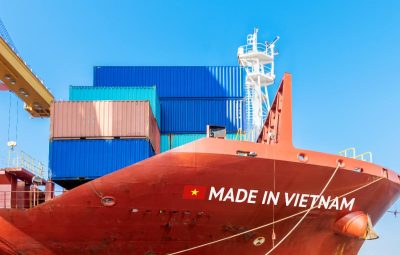Vietnam has been the hot topic lately. After a visit recently, I saw first hand the potential along with the challenges. Clients are definitely evaluating changing the source of supply to Vietnam. And the question is should they? Or, alternatively, the question is whether they are moving fast enough?
Although there are infrastructure issues, the most successful clients are already ahead of the curve and are seriously considering Vietnam. Of course, it is not best for all products and situations, just as China wasn’t best for all situations previously. If you are starting to see prices increases in China and are concerned about the quality and reliability as China is struggling, it is definitely something to consider. Consider this fact – many Chinese companies are moving production to Vietnam, and so obviously there is something to be said for evaluating this source of supply.
Vietnam likes manufacturing and the United States. One of my proactive clients has been moving a significant portion of their supply from China to Vietnam over the last year. They started the process before the tariffs because they expected to save significantly with Vietnam production; however, they really looked like heroes to their Board when they also beat the Chinese tariffs with the move.
This does NOT mean it will always make sense. We also have clients who outsourced to China a long time ago when it was the latest “fad”. In fact, the tide turned over the last several years such that the total cost of the product as well as the gains in customer satisfaction of sourcing closer to customer demand (typically in N.A.) makes a lot more sense; however, most of the companies in this situation haven’t changed supply yet due to capital and infrastructure costs and related efforts to move the source of supply. Yet it can be done. Our client reevaluated and started the transition to Vietnam. Recently, the tariffs are forcing several to re-think the China strategy but is it “too late”? Are you going to wait for the next tariff scenario where you are on the defensive or are you gong to proactively reevaluate your entire strategy?
Certainly part of what you’ll need to evaluate is your working capital requirements. How does China compare with Vietnam? Both require an extended supply chain. Generally speaking, the longer lead times to cross the ocean carry working capital requirements. As customers become more demanding, you’ll need to consider inventory as a key component to your sourcing decisions. Pick up some tips and strategies in our recent article ” Inventory Management as Fashionable as Automated Intelligence for Distributors” for ACHR News.
Getting ahead of the curve might be the only avenue to success. When looking at China vs. Vietnam, it is quite clear that China is significantly larger and has far more manufacturing capability; however, those early to Vietnam won’t have to worry about this particular issue And of course Vietnam is racing to catch up. Whether you have sourcing in China, Vietnam or neither, the underlying point is essential. Are you constantly revisiting your supply chain strategy? If not, you’ll likely be left following your competitors. Instead, consider future-proofing your manufacturing and supply chain business. Stay tuned and read more about it, and If you are interested in discussing a supply chain assessment, please contact us.



